Abstract
OBJECTIVES. A large US sample was used to estimate the effects of race, employment status, income, education, occupation, marital status, and household size on mortality. METHODS. Approximately 530,000 persons 25 years of age or more were identified from selected Current Population Surveys between 1979 and 1985. These individuals were followed for mortality through use of the National Death Index for the years 1979 through 1989. RESULTS. Higher mortality was found in Blacks than in Whites less than 65 years of age; in persons not in the labor force, with lower incomes, with less education, and in service and other lower level occupations; and in persons not married and living alone. With occasional exceptions, in specific sex and age groups, these relationships were reduced but remained strong and statistically significant when each variable was adjusted for all of the other characteristics. The relationships were generally weaker in individuals 65 years of age or more. CONCLUSIONS. Employment status, income, education, occupation, race, and marital status have substantial net associations with mortality. This study identified segments of the population in need of public health attention and demonstrated the importance of including these variables in morbidity and mortality studies.
Full text
PDF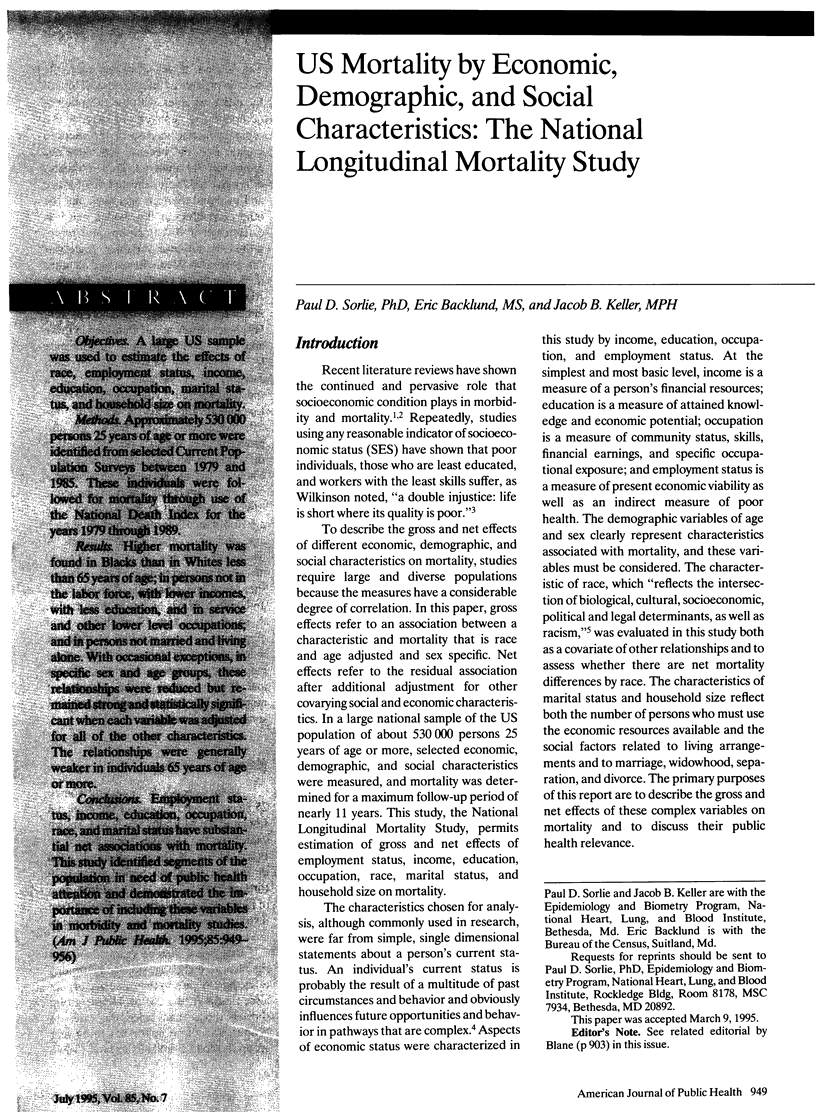
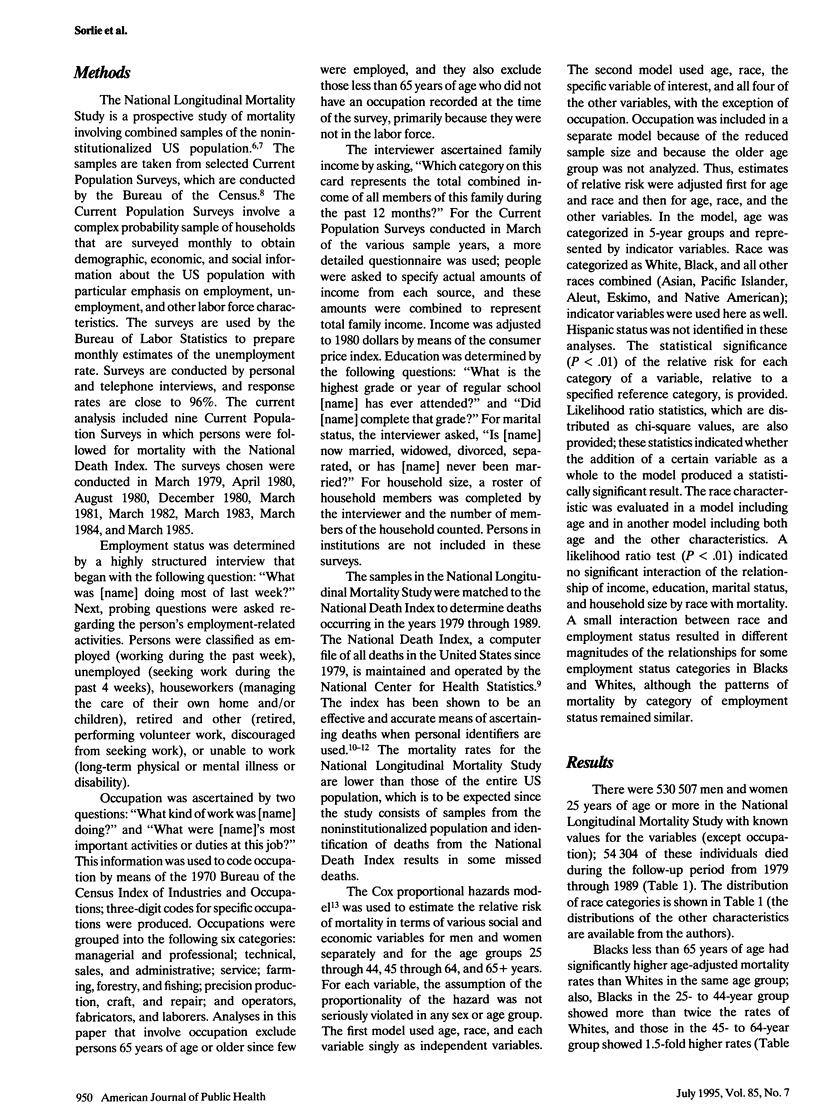
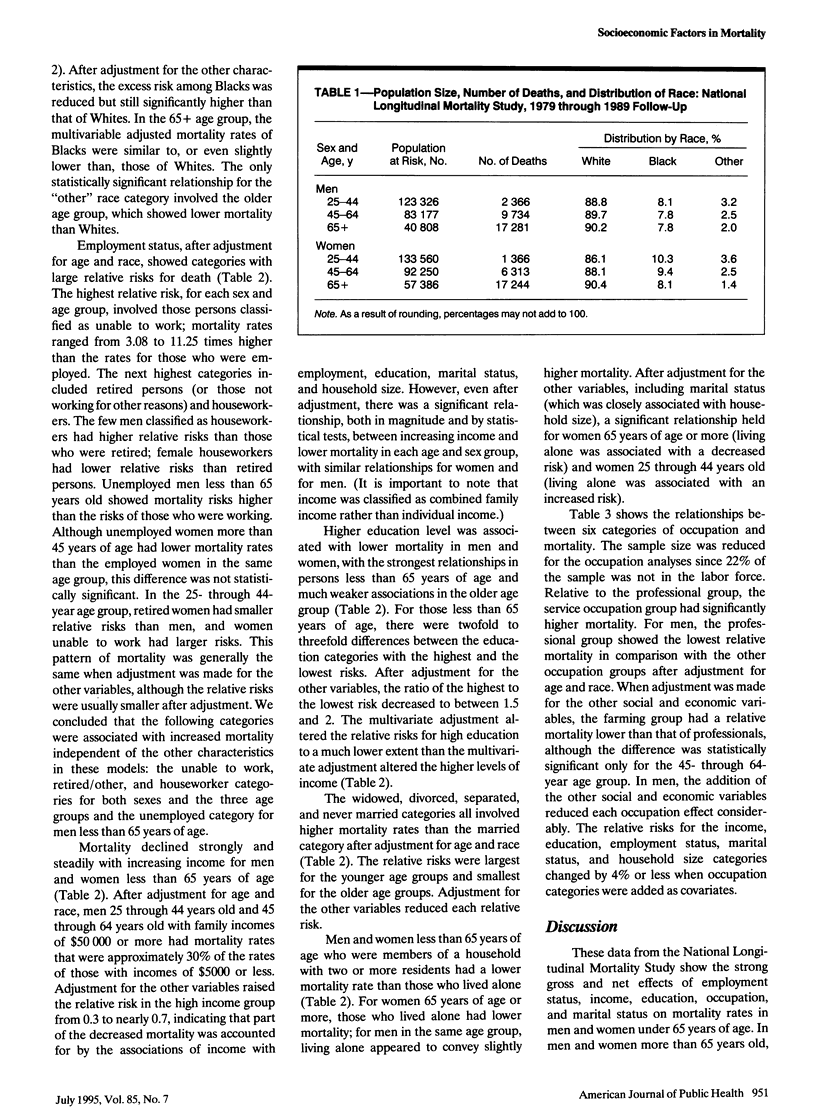
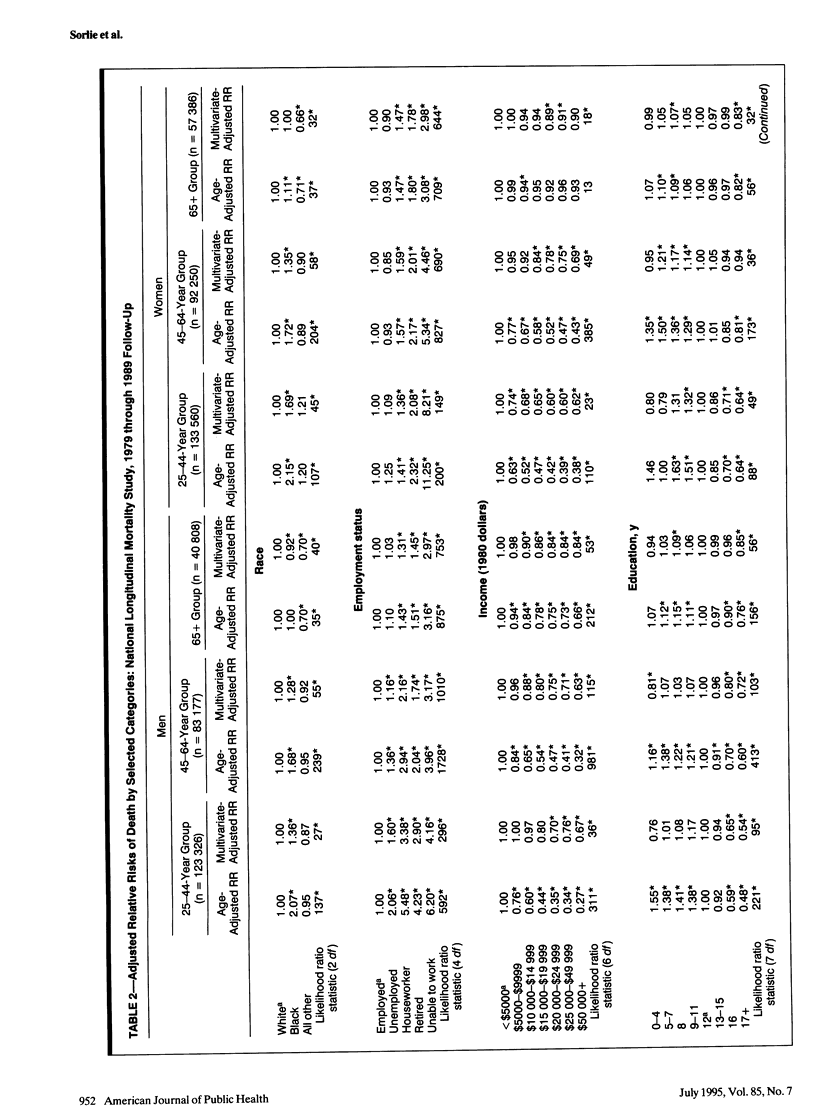
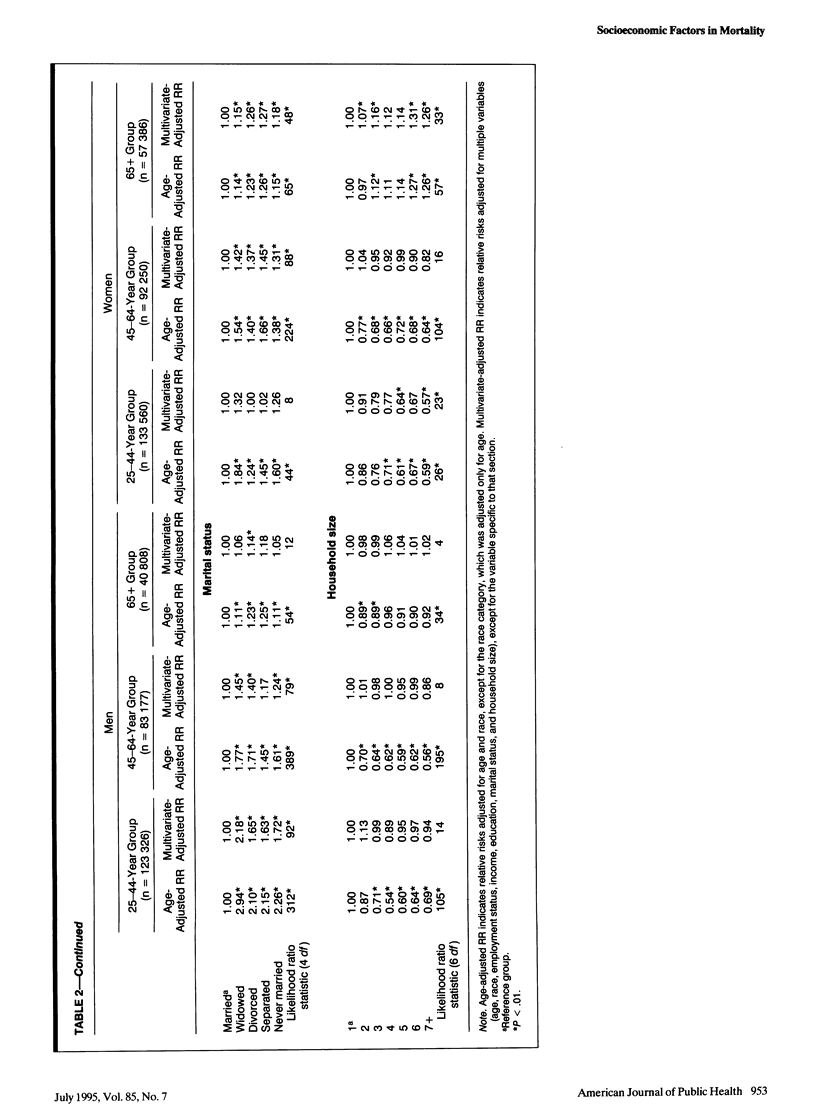
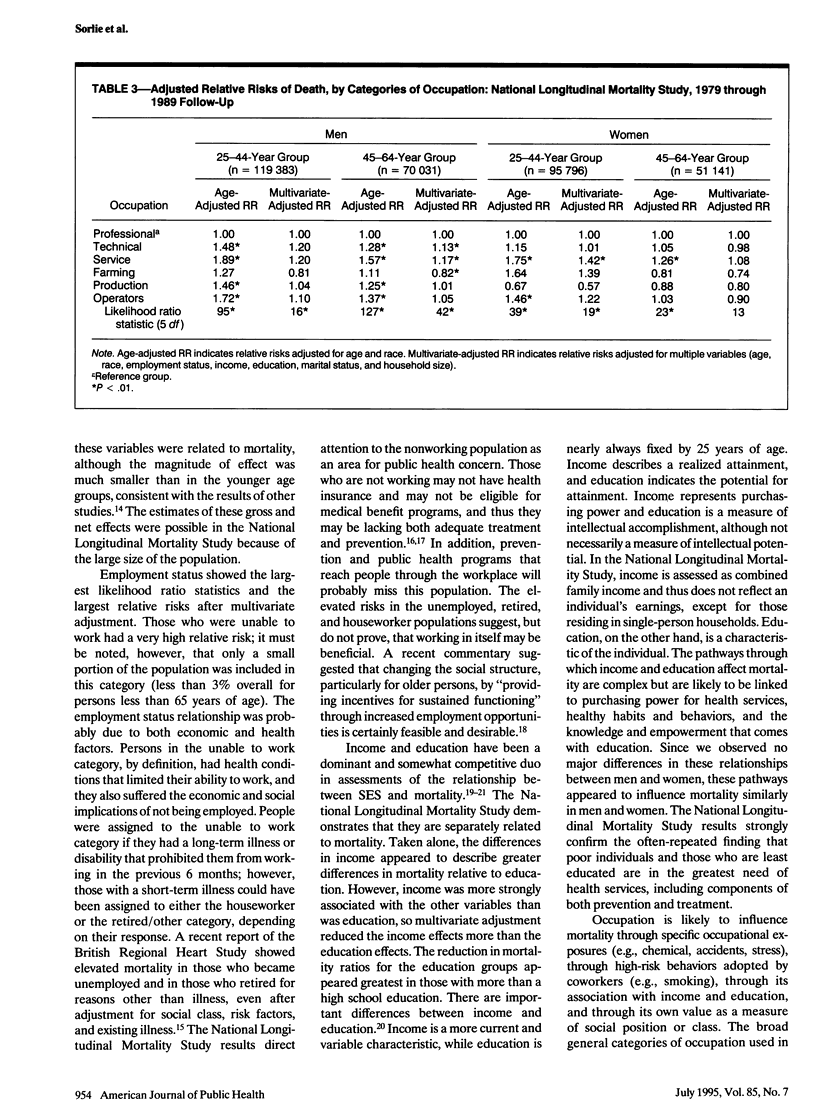
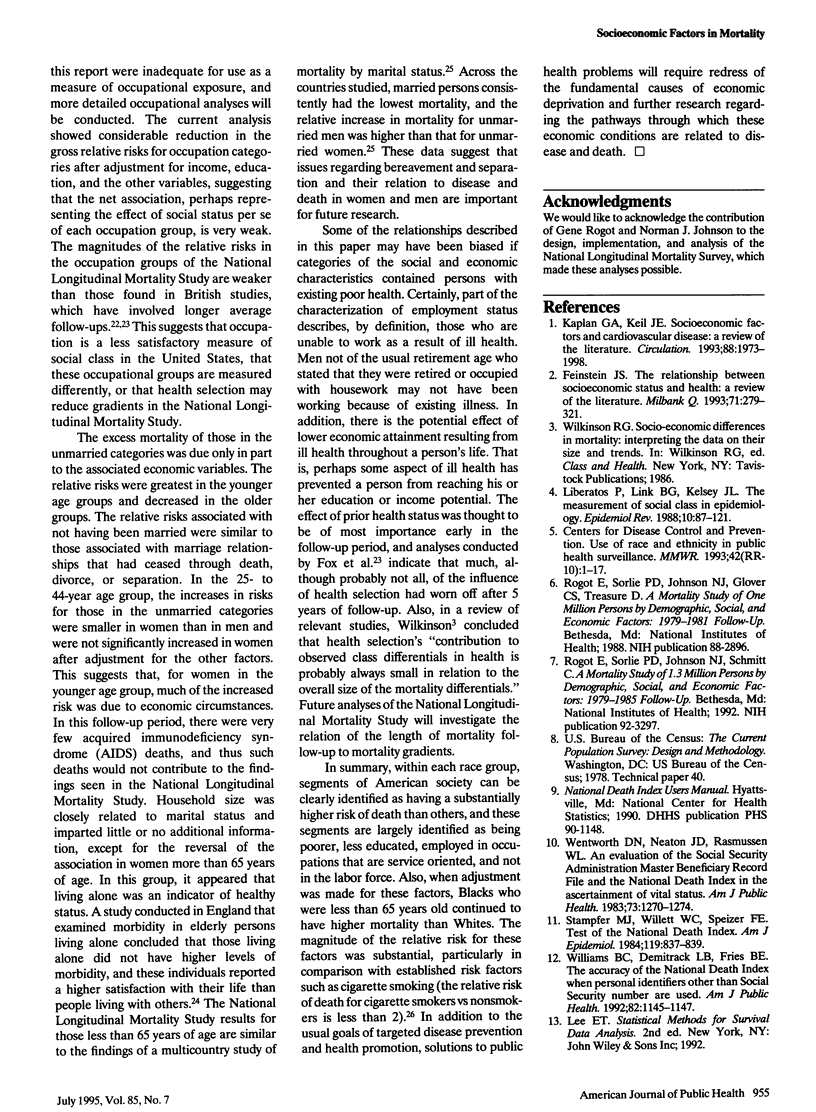
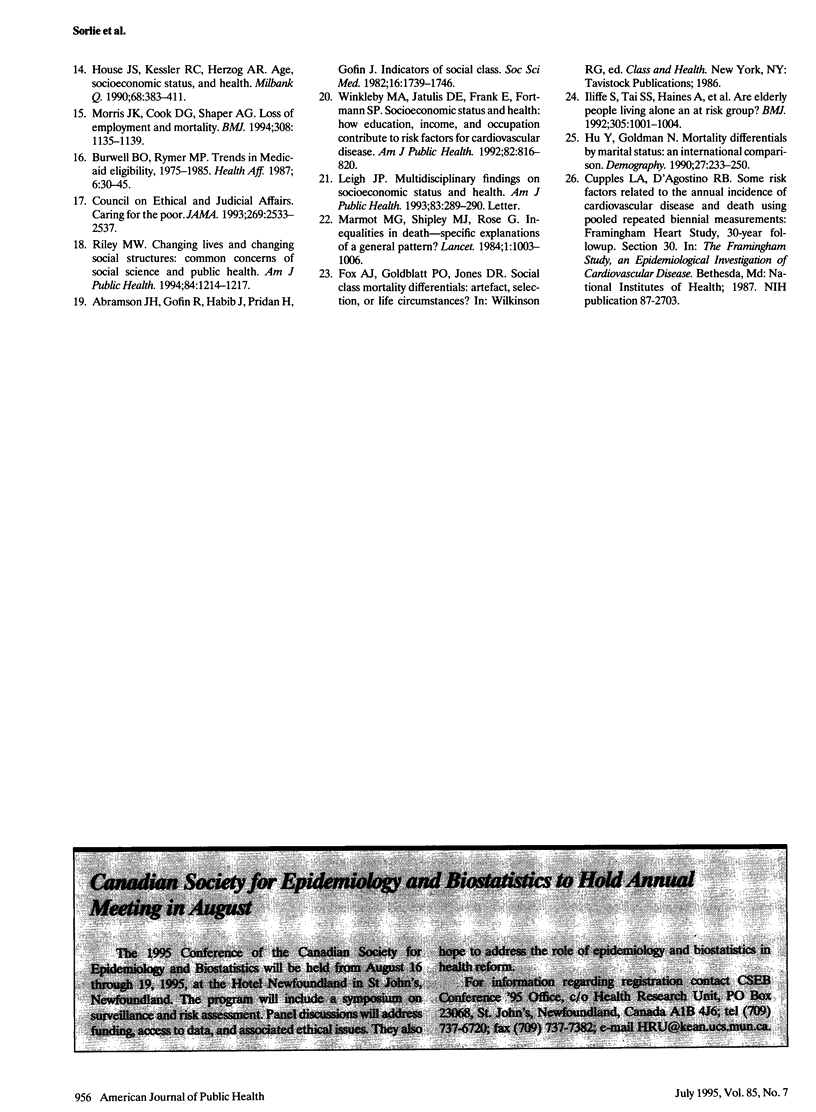
Selected References
These references are in PubMed. This may not be the complete list of references from this article.
- Abramson J. H., Gofin R., Habib J., Pridan H., Gofin J. Indicators of social class. A comparative appraisal of measures for use in epidemiological studies. Soc Sci Med. 1982;16(20):1739–1746. doi: 10.1016/0277-9536(82)90267-2. [DOI] [PubMed] [Google Scholar]
- Burwell B. O., Rymer M. P. Trends in Medicaid eligibility: 1975 to 1985. Health Aff (Millwood) 1987 Winter;6(4):30–45. doi: 10.1377/hlthaff.6.4.30. [DOI] [PubMed] [Google Scholar]
- Feinstein J. S. The relationship between socioeconomic status and health: a review of the literature. Milbank Q. 1993;71(2):279–322. [PubMed] [Google Scholar]
- House J. S., Kessler R. C., Herzog A. R. Age, socioeconomic status, and health. Milbank Q. 1990;68(3):383–411. [PubMed] [Google Scholar]
- Hu Y. R., Goldman N. Mortality differentials by marital status: an international comparison. Demography. 1990 May;27(2):233–250. [PubMed] [Google Scholar]
- Iliffe S., Tai S. S., Haines A., Gallivan S., Goldenberg E., Booroff A., Morgan P. Are elderly people living alone an at risk group? BMJ. 1992 Oct 24;305(6860):1001–1004. doi: 10.1136/bmj.305.6860.1001. [DOI] [PMC free article] [PubMed] [Google Scholar]
- Kaplan G. A., Keil J. E. Socioeconomic factors and cardiovascular disease: a review of the literature. Circulation. 1993 Oct;88(4 Pt 1):1973–1998. doi: 10.1161/01.cir.88.4.1973. [DOI] [PubMed] [Google Scholar]
- Leigh J. P. Multidisciplinary findings on socioeconomic status and health. Am J Public Health. 1993 Feb;83(2):289–290. doi: 10.2105/ajph.83.2.289-a. [DOI] [PMC free article] [PubMed] [Google Scholar]
- Liberatos P., Link B. G., Kelsey J. L. The measurement of social class in epidemiology. Epidemiol Rev. 1988;10:87–121. doi: 10.1093/oxfordjournals.epirev.a036030. [DOI] [PubMed] [Google Scholar]
- Marmot M. G., Shipley M. J., Rose G. Inequalities in death--specific explanations of a general pattern? Lancet. 1984 May 5;1(8384):1003–1006. doi: 10.1016/s0140-6736(84)92337-7. [DOI] [PubMed] [Google Scholar]
- Morris J. K., Cook D. G., Shaper A. G. Loss of employment and mortality. BMJ. 1994 Apr 30;308(6937):1135–1139. doi: 10.1136/bmj.308.6937.1135. [DOI] [PMC free article] [PubMed] [Google Scholar]
- Riley M. W. Changing lives and changing social structures: common concerns of social science and public health. Am J Public Health. 1994 Aug;84(8):1214–1217. doi: 10.2105/ajph.84.8.1214. [DOI] [PMC free article] [PubMed] [Google Scholar]
- Stampfer M. J., Willett W. C., Speizer F. E., Dysert D. C., Lipnick R., Rosner B., Hennekens C. H. Test of the National Death Index. Am J Epidemiol. 1984 May;119(5):837–839. doi: 10.1093/oxfordjournals.aje.a113804. [DOI] [PubMed] [Google Scholar]
- Wentworth D. N., Neaton J. D., Rasmussen W. L. An evaluation of the Social Security Administration master beneficiary record file and the National Death Index in the ascertainment of vital status. Am J Public Health. 1983 Nov;73(11):1270–1274. doi: 10.2105/ajph.73.11.1270. [DOI] [PMC free article] [PubMed] [Google Scholar]
- Williams B. C., Demitrack L. B., Fries B. E. The accuracy of the National Death Index when personal identifiers other than Social Security number are used. Am J Public Health. 1992 Aug;82(8):1145–1147. doi: 10.2105/ajph.82.8.1145. [DOI] [PMC free article] [PubMed] [Google Scholar]
- Winkleby M. A., Jatulis D. E., Frank E., Fortmann S. P. Socioeconomic status and health: how education, income, and occupation contribute to risk factors for cardiovascular disease. Am J Public Health. 1992 Jun;82(6):816–820. doi: 10.2105/ajph.82.6.816. [DOI] [PMC free article] [PubMed] [Google Scholar]


